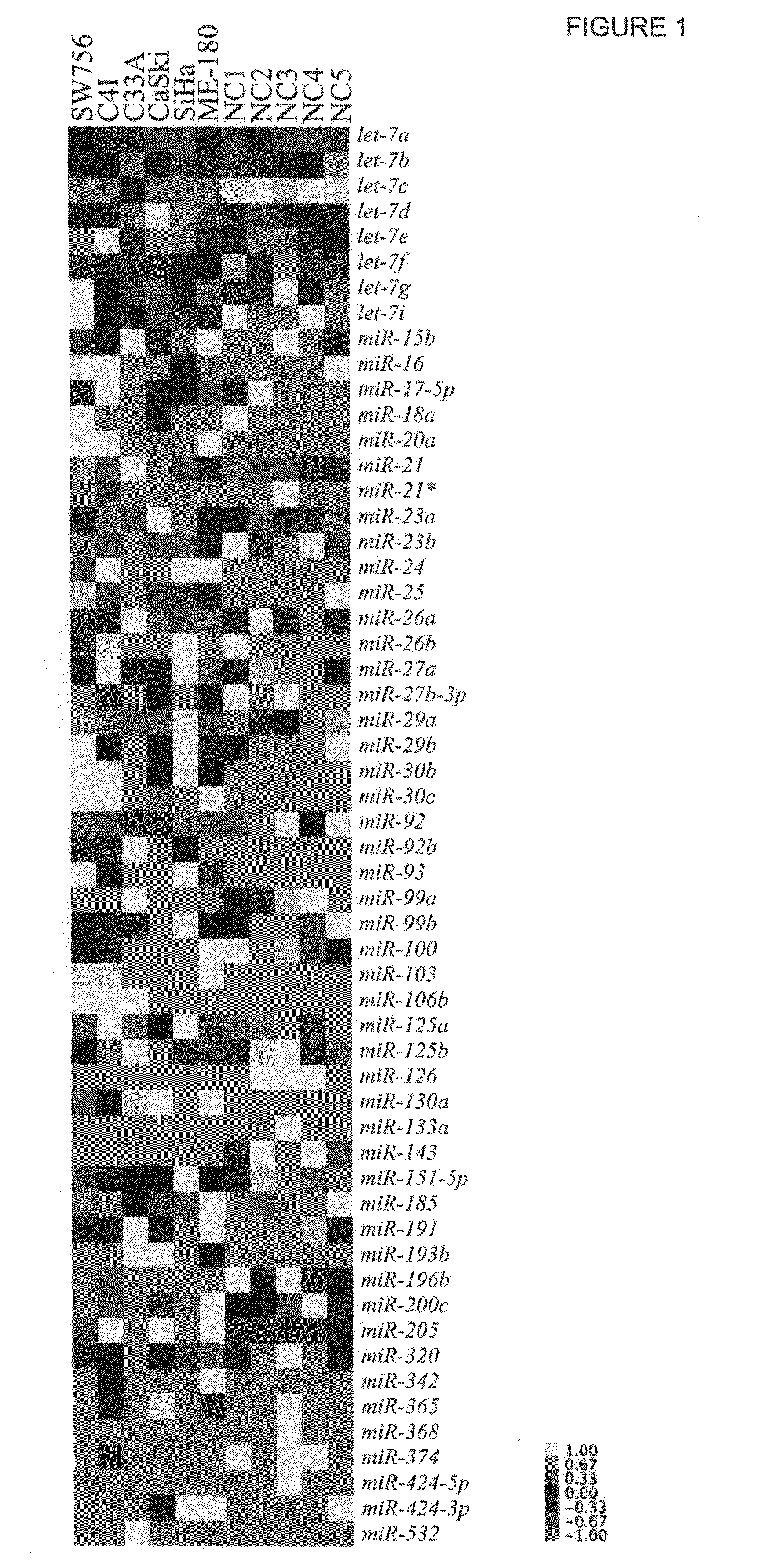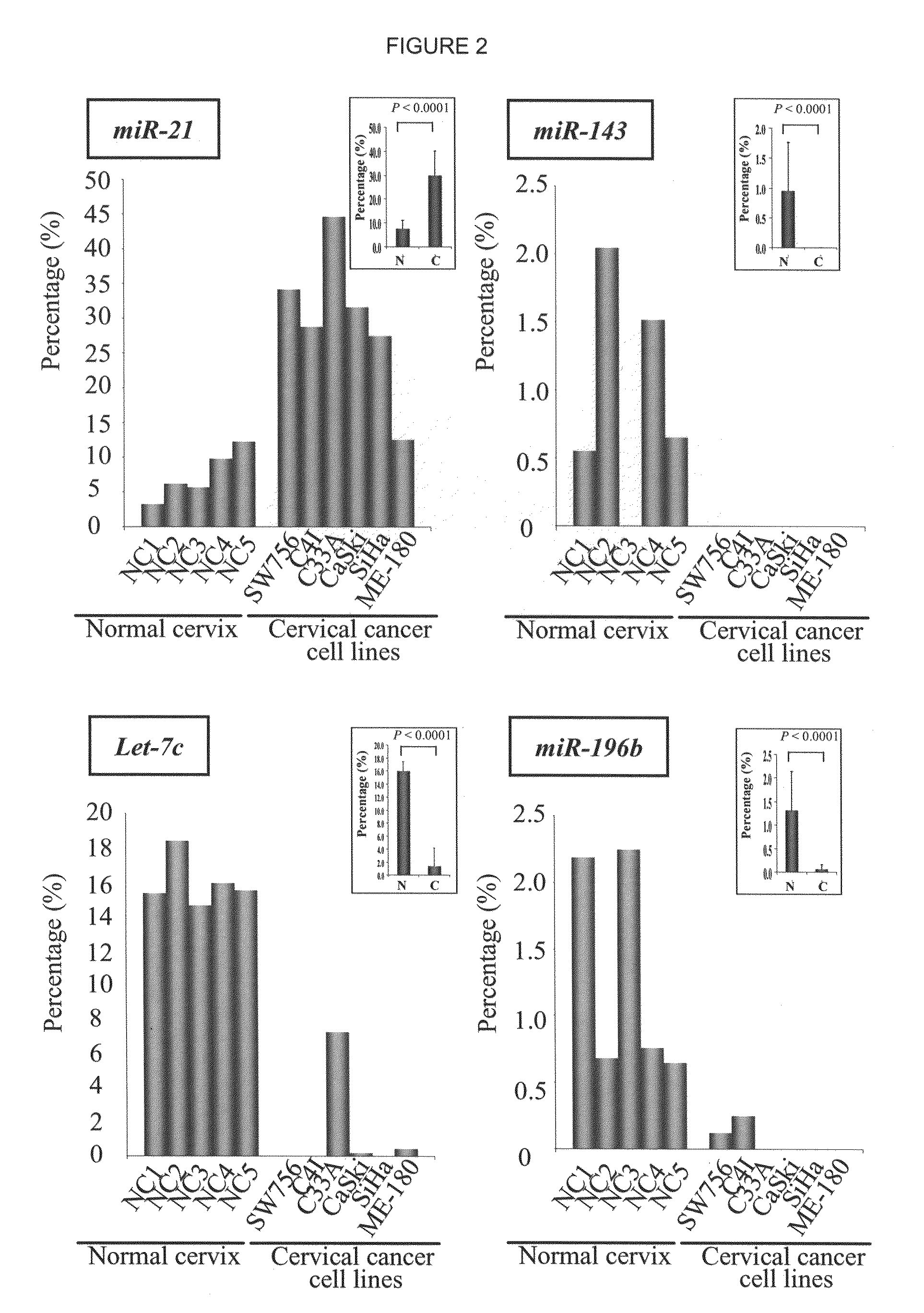Patterns of known and novel small RNAS in human cervical cancer
a technology of human cervical cancer and small rnas, which is applied in the field of human cervical cancer small rnas, can solve the problems of high incidence and mortality of the disease, and difficulty in detecting the disease, and achieve the effects of suppressing or inhibiting a cancerous phenotype, reducing and increasing the expression of cervical cancer
- Summary
- Abstract
- Description
- Claims
- Application Information
AI Technical Summary
Benefits of technology
Problems solved by technology
Method used
Image
Examples
example 1
Patterns of Known and Novel Small RNAs in Human Cervical Cancer
[0127]Recent studies suggest that knowledge of differential expression of miRNAs in cancer may have substantial diagnostic and prognostic value. Here, a direct sequencing method is used to characterize the profiles of miRNAs and other small RNA segments for six human cervical carcinoma cell lines and five normal cervical samples. Of 166 miRNAs expressed in normal cervix and cancer cell lines, we observed significant expression variation of six miRNAs between the two groups. To further demonstrate the biological relevance of our findings, we examined the expression level of two significantly varying miRNAs in a panel of 29 matched pairs of human cervical cancer and normal cervical samples. Reduced expression of miR-143 and increased expression of miR-21 were reproducibly displayed in cancer samples, demonstrating the value of these miRNAs as tumor markers. In addition to the known miRNAs, we found a number of novel miRNAs...
PUM
 Login to View More
Login to View More Abstract
Description
Claims
Application Information
 Login to View More
Login to View More - R&D
- Intellectual Property
- Life Sciences
- Materials
- Tech Scout
- Unparalleled Data Quality
- Higher Quality Content
- 60% Fewer Hallucinations
Browse by: Latest US Patents, China's latest patents, Technical Efficacy Thesaurus, Application Domain, Technology Topic, Popular Technical Reports.
© 2025 PatSnap. All rights reserved.Legal|Privacy policy|Modern Slavery Act Transparency Statement|Sitemap|About US| Contact US: help@patsnap.com



